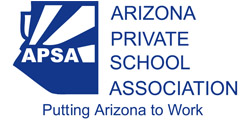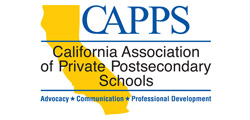Badge Evidence | Completed Courses (4 Hours Each)
EL101Designing and Developing Online Courses
This introductory course will provide you with the knowledge and skills to create successful online courses, whether for faculty-supported distance education delivery or as a supplement to classroom instruction. You will learn to design and develop online courses that have structural integrity and navigational simplicity with a focus on student-centered learning and intellectual interaction. The course covers various learning activities that are supported in an e-learning environment and describes the typical components of an online course. We will provide you with the media strategies and course design methodologies that will allow you to develop online courses in an effective and efficient manner.
EL104Teaching and Organizing a Virtual Learning Environment
This course will provide you with basic information to teach in a virtual learning environment and understand the importance of organizing course content. You will learn about the important role technology tools play in teaching and organizing an online course. You will also learn the difference between synchronous and asynchronous learning. As the components of each are discussed, you will further identify appropriate methods, develop guidelines, organize content, and establish a pattern of teaching for each method.
EL105ROnline Language: Communicating with Students
This course provides information to help you effectively communicate with students and encourage communication among students in an online environment. You will learn the importance of facilitating instructor-to-student (I2S), student-to-instructor (S2I), and student-to-student (S2S) communication. Digital technology tools play a vital role in the modern communication process, and several are discussed in this course. In addition, discussion is provided to help you further understand how to manage and measure communication in an online course and help students communicate effectively.
EL107RDesigning Dynamic and Technology-Rich Learning Environments
This course outlines the main characteristics of "dynamic" course design for blended instruction and highlights effective teaching methods that facilitate the learning process. Participants in this course will be able to customize the design principles and methods presented here to suit their individual professional context.
EL108Preparing Students to Become Good Online Learners
This course will provide you with strategies and techniques to help prepare students for the online environment. To do so, you must also assess your strengths and weaknesses as an online instructor. As you help students assess their readiness for online learning, you are also preparing them for the expectations and realities of the online environment. By identifying students' strengths and weaknesses, you can provide guidance to help them achieve the learning outcomes. This course not only notes the necessary technical skills, it also discusses non-technical skills as well as techniques for successful learning and helping students develop their online persona.
EL110Effective Use of Social Media in Online Courses
This course will provide you with strategies and techniques to help use social networking in the online environment. It provides an overview of social networking, media hosting and sharing, microblogging and blogging. An introduction to each will be provided, and content development, policy, facilitation and assessment will all be discussed. Suggested activities will also be provided.
EL114Respecting Copyrights and Leveraging Available Resources
This course provides a basic overview of the background and history of the usage of copyrighted materials in U.S. education. Copyright usage is an often-misunderstood area of education. This course will help build an awareness of the U.S. Copyright Law and its various components. Instructors will be given practical examples on how to correctly use copyrighted materials in their classrooms. In the 21st century, many students do not recognize common concepts such as pirating of music and videos. Instructors are on the frontline in education and can educate newer generations on the ideas of fair use, intellectual property, and piracy issues.
EL115RGaming and Simulation in Online Learning
This course will provide you with strategies and techniques to immerse students in an interactive environment that will incorporate gaming and simulations to introduce, engage, and reinforce online learning. This course will begin with definitions of gaming and simulations as a tool for online learning and will provide guidance to evaluate, implement, and assess the effectiveness of games.
EL119Virtual Internships
This course will provide you with an overview of virtual internships. Virtual internships are also referred to as remote internships, virtual placement programs, and virtual co-ops. Virtual internships have been implemented in many online programs in various settings. This course will provide a working definition and information pertaining to various components of virtual internships. It is essential for instructors working with virtual interns to share this information with employers and students to help prepare them for virtual internships.
EL120Fully Online Doesn't Mean Inactive
Active and passive learning are critical concepts to ponder for online learning. Each one has positive benefits when explored and applied in the context of learning and the designing of instruction. There is, however, a difference between passive and inactive. One is an intentional part of learning while the other is the absence of something. We will explore these and other concepts in this course. In addition, strategies will be shared that will enable educators to make their online instruction more engaging and beneficial for learners.
EL121Teaching Skills and Trades Online
Although online learning is becoming more normalized in our educational institutions, there are still many questions about its effectiveness for certain areas of study and training. There remains an idea that online learning is mostly passive and therefore unsuitable for anything active and specifically the development of skills and trades. This course will explore the changing realities of online learning and how effective it can be in the training of skills and trades. Strategies will be shared to facilitate the online teaching of applied skills in simulated and real-world settings.
EL201ROnline Communication: Engaging and Retaining Online Learners
Research shows that supportive working relationships between students and institutional personnel are vital to student retention. For online students, these relationships are especially essential in preventing a sense of isolation and detachment from their academic experience. Because interactions with online students are most likely to occur via phone and text-based methods, developing retention-supporting relationships can be challenging. This course teaches online communication strategies that foster connection and engagement with online learners. Participants will develop a deeper understanding of (a) retention and attrition research, (b) online learning, and (c) technology's unique role in both the relationship-building process and the online student experience.





























